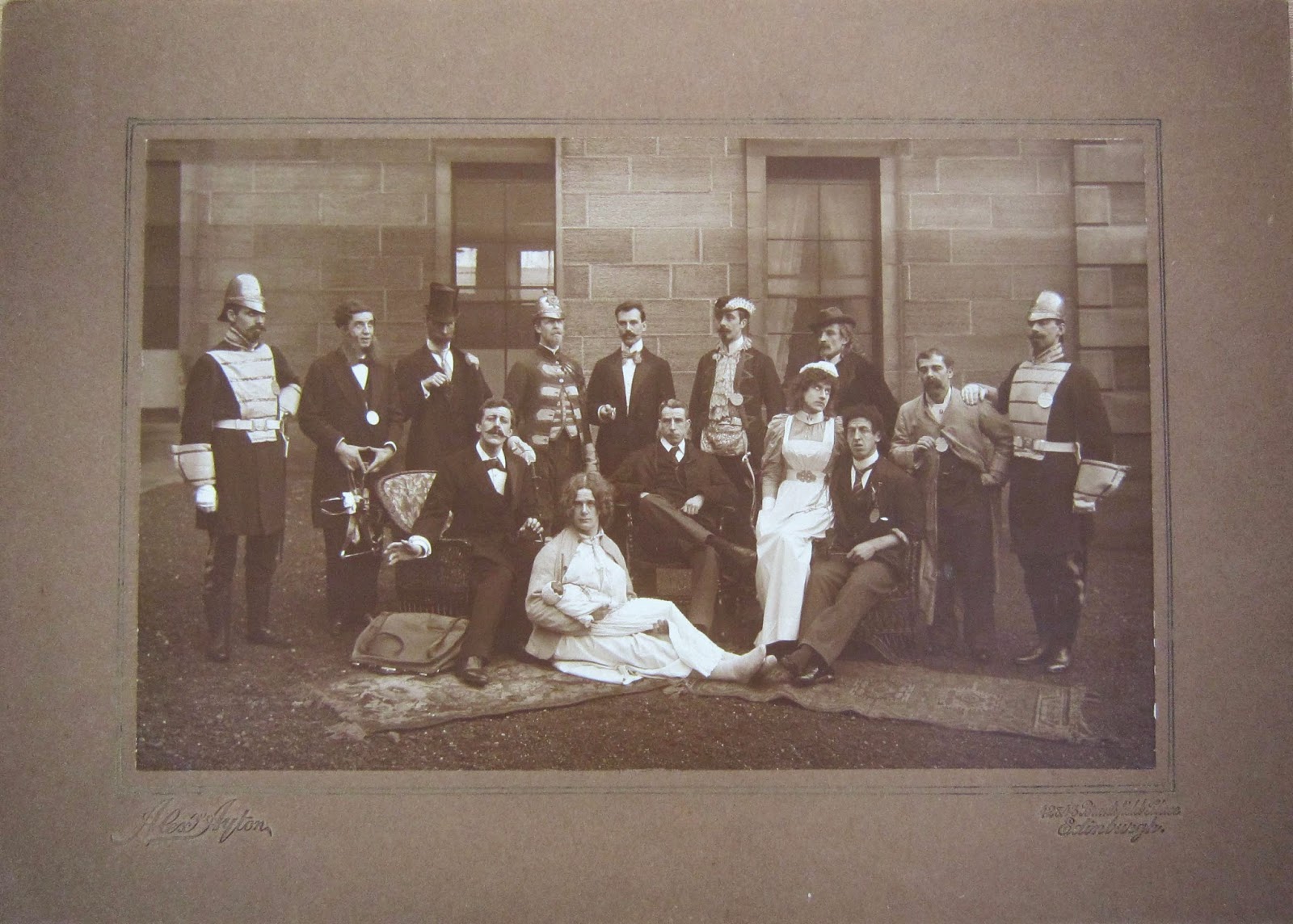Perhaps unsurprisingly, the records that we hold for
hospital staff are considerably less detailed than most of those that we have
for patients. We can often say that someone was a nurse, doctor or a member of
non-medical staff at a particular time, but can provide few other details than
that. Although sometimes photographs, monographs and nurse training records can fill some
gaps, it can be hard to access individual personalities behind professional
roles or to reconstruct the daily lives of hospital staff from archives alone.
However, for some periods and for some institutions, we have
a little more to build up a picture of life off the wards. One example that
I’ve become intrigued by is the section of our Royal Infirmary of Edinburgh
(RIE) collection from the Residents’ Mess. After graduating from their medical
course, physicians had to complete a period of practice experience in a
hospital, in whose grounds they lived as a House Officer for six months (before
1950 – although this then was amended to a full year of service). We have quite
a range of records from those serving this medical apprenticeship, from the
photographs of residents that appear fairly often on our website and social
media, including our earliest featuring Joseph Lister…..
Our earliest photograph of RIE residents, 1854 (P/PLI/S/294)
… to lists of residents (charting the early careers of
clinicians who would go on to change the course of Scottish medical history), rules,
correspondence, financial records and ephemera.
Page from Rules Subscribed by Resident Physicians and Surgeons (1895-1928) from October 1921. Can you spot and famous names? (LHB1/114/1)
One set of records that stood out to me was the log books of the Residents’ Mess – what would a canteen log book be like, I wondered naively? In fact, a ‘Mess’ referred to each new intake of residents. Looking at the Residents’ Mess log book from 1914 to 1915, it is a curious document, recording the lighter side of clinical life with an entry for each day. There are in-jokes lost in the interceding years, nicknames, some decidedly savoury language and an almost daily recording of fines handed down to members of the Mess. Here is a more than typical (and relatively tame!) page:
This loose page from an unknown volume mentions (amongst the
obligatory sampling of wine for the mess dinner) a fancy dress parade, which
seems to have dropped off, but was planned to be revived:
The Mess Log from 1914 has more detail about the parade, which took place every Christmas Eve at 11pm from the Surgical Outpatients’ Department (SOPD), and lists in delightful detail the individual outfits of each member taking part, including the prize-winner, Dr W A Alexander, who cut a dash as a ‘ballet girl’. Dr Alexander was far from alone, since ‘there was a strong majority of ladies of all ages, nationalities and description from Little Red Riding Hood up to the fully developed butterflys [sic.]’.
Page mentioning the residents' outfits from the Log Book of the Residents' Mess 1914-1915 (LHB1/115/4)
If you’d like to put some faces to some of the names
mentioned, here is the class of Winter 1914, with the fancy dress prize-winner
in the centre front row:
RIE Residents, Winter 1914 (LHSA photographic collection)
And to prove that the parade was not an isolated occurrence, here's an early twentieth century image of residents in their finery:
Residents taking a break from their hospital white coats, early twentieth century (P/PL1/R/008)
The residents also produced a light-hearted magazine, the Infirmary Independent, of which we have the first (and perhaps only!) edition from 1913. It serialised stories, published satirical poems, and included outlines of out-of-work activities, including theatre and sports.
Cover and first page of The Infirmary Independent, 1913 (LHB1/115/12)
My favourite part of the magazine is ‘The Probationer’s
Guide to Knowledge’ (a probationer is defined in the piece as a trainee – or in
this case ‘trying’ – nurse) – but at least these young doctors seem to know
their place before the ultimate earthly hospital authority, since they acknowledge that 'above [the probationers] are the assistant nurses, above them the sisters, above them the assistant-superintendents , above them the lady superintendent, above her, we believe, the Almighty.'
What we have left from the residents' off-duty life is at times funny, sometimes (to our twenty-first century ears) bordering on the (or actually) offensive, but reveals a world lost in time. This world was undoubtedly a privileged one, since residents had the advantage of an elite education and received no salaries from the RIE before the NHS, but would come to rely for their income on private practice.
And if you ever wondered what the Mess actually had for their dinner every night, we can tell you that as well:
Pages from book of residents' daily menus, 1918 - 1921 (LHB1/115/8)
If you've been equally fascinated by the world of the RIE residency, you can read more in coming weeks, as we outline a theatrical visit to the fledgling doctors in our Every Picture Tells a Story feature. And this time, it's not the residents dressing up....
















